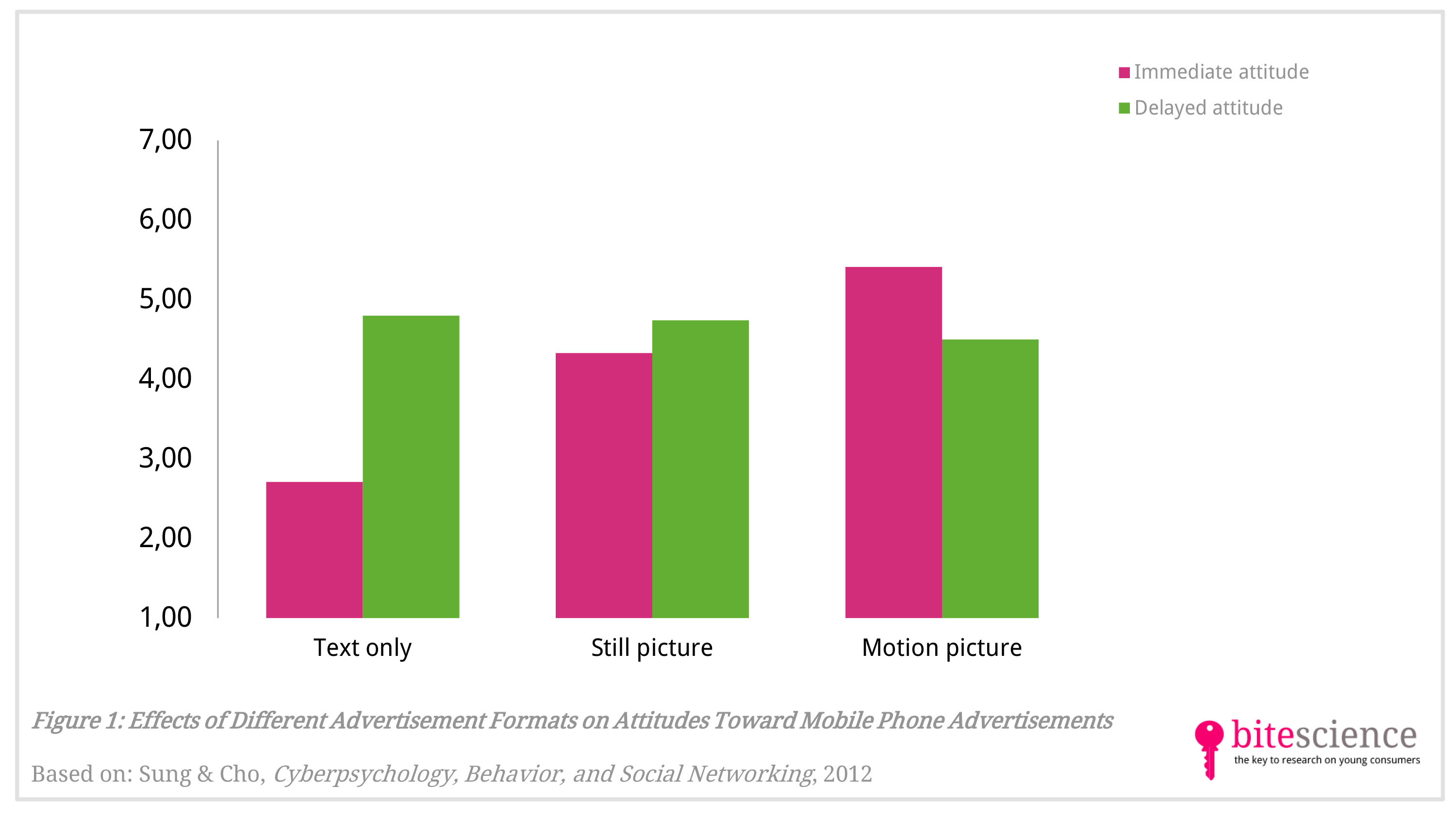
Motion Mobile Phone Ads Are Only Effective For a Short Period of Time
According to a study in Cyberpsychology, Behavior, and Social Networking, motion pictures in a mobile phone advertisement can increase young adults' liking of the ad. However, this effect only last for a short period of time. Mobile phone ads with text only or with still pictures seem to be more effective in creating positive attitudes by young adults over the long-term.
Take aways
- Motion pictures in advertisements are successful in creating positive initial attitudes toward mobile phone ads. However, this positive effect only last for a short period of time.
- To positively influence young adults’ attitudes toward mobile phone advertisements over the long-term, it is wise to implement text and still pictures in the advertisement and leave flashy motion pictures out.
Study information
The question?
What is the effect of different mobile advertising formats (text, still, motion) on attitudes toward these advertisements?
Who?
117 students (mean age: 23 years old; 66 men and 51 women)
Where?
South Korea
How?
The participants were shown three different versions of the same airline advertisement via a mobile phone: (1) text only, (2) still picture and (3) a motion picture. All ads were displayed for 30 seconds. Directly after watching each ad, the participants were asked to indicate their attitude toward that ad (‘immediate attitude’). After four weeks, all participants were contacted again via their mobile phones and asked which ads they remembered. In addition, they were asked for their attitude toward the ads they remembered (‘delayed attitude’).
Facts and findings
- Students had the most positive immediate attitudes toward mobile phone advertisements when they received and advertisement with motion pictures.
- When students received an advertisement with only text, their immediate attitude toward mobile phone advertisements was the least positive.
- The impact of the different advertising formats changed over time. After 4 weeks students’ attitude toward advertisements with motion pictures declined, whereas attitudes toward advertisements with only text and with still pictures grew more positive.
- An explanation for this finding is that the flashy media features present in ads with motion pictures are generally less stored in memory and therefore more likely to be forgotten after a few weeks. Because students remember less of the advertisement, they are also less positive about it.
